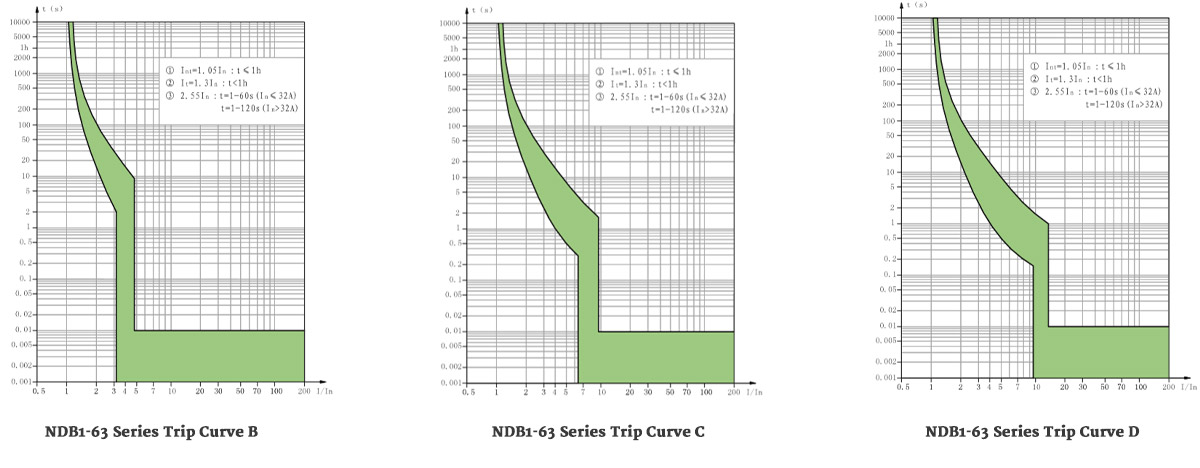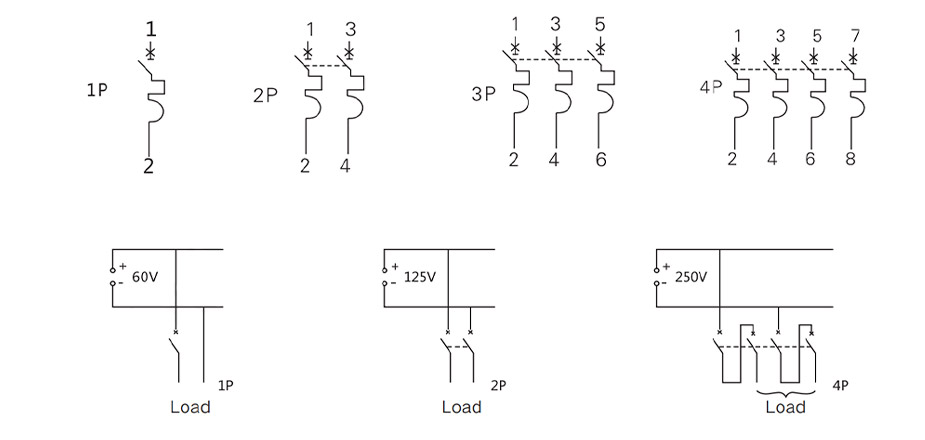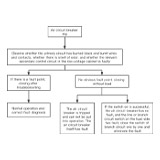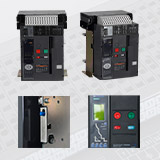The miniature circuit breaker is mainly used for overload and short circuit protection in the line with rated voltage of 400V and below and rated current of 125A, as well as infrequent operation of motor and infrequent conversion of line.
Miniature circuit breakers are widely used in industry, commerce, high-rise buildings and residential buildings because of their track installation, modular size, diversified functions, artistic modeling and safe use.

Nader various types of miniature circuit breakers
Main parameters of miniature circuit breaker
1. Rated voltage, the voltage value of miniature circuit breaker when working, and the rated voltage of miniature circuit breaker shall not be lower than that of circuit.
2. Rated current, the rated current of the miniature circuit breaker refers to the maximum current that the miniature circuit breaker can work normally for a long time. If the load current exceeds this value, the thermal trip element will heat up, bend the bimetallic sheet and push the free tripping mechanism to trip.
3. Shell rating current, which refers to the rated current of the maximum release installed in the frame or plastic shell with basically the same or similar geometric dimensions. The shell rating current and the rated current of the circuit breaker are different concepts. If the frame current is the same, the size of the products produced by the same factory is exactly the same. However, if the rated current of two circuit breaker releases is the same and the rated current of shell frame is different, their sizes will be very different.
4. Rated breaking capacity and ultimate breaking capacity.
(1) The rated limit short-circuit breaking capacity refers to the limit point of action caused by the maximum short-circuit current that the protection device can bear. The miniature circuit breaker with limit breaking can not be reused.
(2) The rated operation short-circuit breaking capacity refers to the ability of the protection device to act due to the short-circuit current it can bear in the normal operation process. It can be reused.
5. According to the tripping characteristics of circuit breakers, miniature circuit breakers are divided into B, C, D, etc., and their meanings are as follows:
Type B tripping characteristic: the tripping current is (3 ~ 5) In, which is suitable for household distribution system, household appliances protection and personal safety protection.
Type C tripping characteristic: the tripping current is (5-10) In, which is suitable for protecting distribution lines, lighting lines and motor circuits with high connecting current.
Type D tripping characteristic: the tripping current is (10 ~ 20) In, which is suitable for protecting equipment with high impulse current, such as transformer, solenoid valve, etc.
 NDB1-63 Series Trip Curve Chart
NDB1-63 Series Trip Curve Chart
Selection rules of miniature circuit breaker
General selection rules
1. The rated working voltage of miniature circuit breaker is greater than or equal to the rated voltage of line.
2. The rated current of miniature circuit breaker is greater than or equal to the calculated load current of the line.
3. The rated short-circuit breaking capacity of miniature circuit breaker is greater than or equal to the maximum short-circuit current that may occur in the line.
4. The setting current of instantaneous release of miniature circuit breaker is less than 0.8 times of single phase ground short circuit current at the end of line.
5. Considering the short-time delay short-circuit making and breaking capacity and the coordination between delay protection stages.
6. Determine the pole number of miniature circuit breaker according to the number of lines to be protected. For example, the general household electricity is single-phase, and the line is composed of a zero line and a live line. If both lines need protection, the circuit breaker with two poles is selected; if the zero line is not required to be protected, the one pole circuit breaker is selected.

NDB1-125 Series

NDB1-125 Series wiring diagram
7. Determine the amperage of the miniature circuit breaker according to the load of the line. For example, if the carrying capacity of the line is 20A and the rated working current of the electric appliance is 10A, the selection of circuit breaker should be > 10A and < 20A.
8. The instantaneous protection type is determined according to the resistance type of the electric appliance in the circuit. There are three types of instantaneous protection, and the corresponding current protection multiples are B: 3 ~ 5In, C: 5 ~ 10In, D10 ~ 14In (in is the rated current). If it is only incandescent lamp, type B can be selected, type C can be selected for general power consumption, and type D can be selected for air conditioning protection.
Selection of small circuit breaker for conductor protection
The setting value of long delay current is less than the line load current.
The setting value of instantaneous action is less than (6-20) times of line calculated load current.
Selection of small circuit breaker for motor protection
Setting value of long delay current = rated current of motor.
Setting value of instantaneous action = (8-15) times of rated current of motor (for protective squirrel cage motor); setting value of instantaneous action = (3-6) times of rated current of motor (for protected wound motor).
Selection of suitable miniature circuit breakers by on-line tools
On Quisure.com, you can quickly and accurately select the required miniature circuit breaker model through parameters and purchase it.
 Choose the right miniature circuit breaker at Quisure
Choose the right miniature circuit breaker at Quisure


















